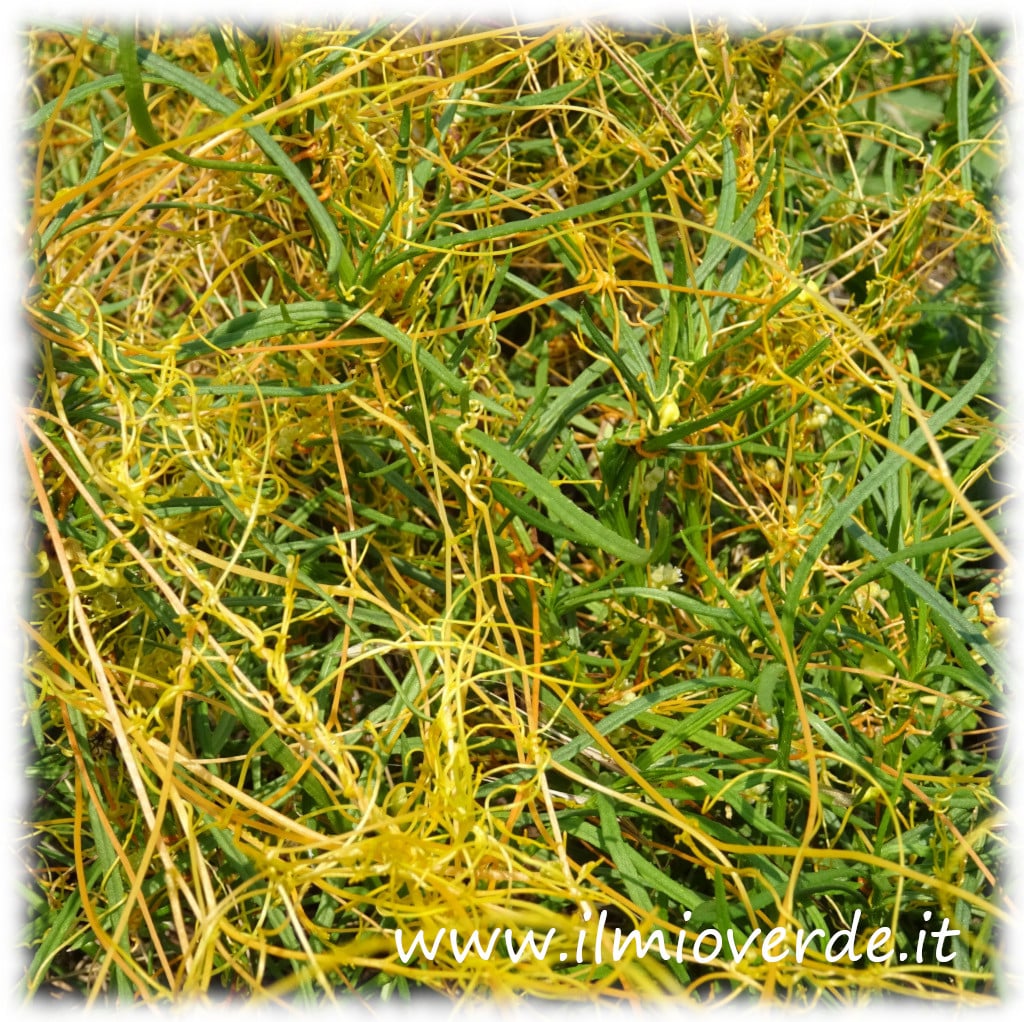Cuscuta spp.
Cuscuta spp., commonly known as “dodder,” is a genus of parasitic plants in the Convolvulaceae family. Famous for its ability to coil around other plants, this plant uses host plants to obtain water and nutrients, as it lacks chlorophyll and is incapable of photosynthesis. Despite its parasitic nature, dodder is a fascinating example of adaptation to plant life.
History and Name Origin
The name “Cuscuta” comes from the Latin cuscutus, meaning “thread,” a clear reference to its thin, creeping form. Known for centuries, dodder has been observed for its ability to grow quickly over other plants, damaging them through its parasitic attack. This “parasitism” mechanism has intrigued botanists and farmers, who consider it a problematic plant in agriculture.
Description
Cuscuta spp. is easily recognizable by its thin, white or yellowish stems that wrap around host plants. Lacking true roots, the plant cannot absorb water or nutrients from the soil. Instead, it develops specialized structures called haustoria, small protrusions that penetrate the vascular tissues of the host plant. These haustoria directly connect to the conductive vessels, stealing water, sugars, and minerals from the host plant. The result is a progressive weakening of the host, reducing its ability to grow and flower.
Characteristics
- Stem: Thin and thread-like, can grow up to 5 meters in length, adapting perfectly to the shape of the host plant.
- Leaves: Absent, as dodder does not require photosynthesis.
- Flowers: Small, white flowers arranged in terminal clusters, blooming in summer.
- Fruit: Small capsules containing numerous seeds, which are easily dispersed by wind or animals.
Flowering
Dodder flowers in summer, producing small white flowers that, although not particularly showy, are essential for its reproduction. Seed dispersal is crucial for the life cycle of this parasitic plant.
Climate and Exposure
Dodder prefers warm, sunny climates. It is common in temperate and tropical regions, where it grows quickly and spreads over other host plants. Its ability to adapt to various environments makes it a particularly invasive parasite.
Substrate and Irrigation
As it does not need to root in the soil, dodder is unaffected by the type of substrate or irrigation conditions. The plant feeds exclusively on host plants, which may be found in poor or stressed soils, increasing the vulnerability of crops.
Fertilization
Dodder does not require fertilization, as it feeds directly from the vascular vessels of host plants, which provide all the nutrients it needs.
Reproduction
Dodder reproduces by seed. Once dispersed, the seeds germinate when they encounter a host plant. Once the seed finds a plant, the parasitism process begins, with the growth of stems that coil around the host.
Care and Tips
If you find dodder infesting your crops, it is essential to act promptly. Manual removal of infested plants is often necessary to prevent serious damage to host plants. If the infestation is widespread, specific treatments against parasites, such as the use of fungicides or pesticides, may be helpful. Another preventive measure is ensuring that crops are well cared for and not stressed, as weak plants are more vulnerable to dodder attacks.
Diseases
Although dodder itself is not susceptible to diseases, its presence can severely weaken host plants, making them vulnerable to fungi and bacteria. Dodder acts as a vehicle, increasing the risk of other infections in its hosts.
Uses
Dodder has no culinary uses and can be toxic if ingested in large quantities. However, some cultures have historically used extracts of dodder for medicinal purposes, such as treatments for cardiovascular diseases or as a tonic, although these remedies should be used with extreme caution as the plant can be dangerous in high doses.
Cuscuta spp. is a fascinating but problematic plant, particularly for farmers and gardeners. Despite its lack of chlorophyll and inability to photosynthesize, dodder has developed a remarkable parasitic ability that allows it to survive, but at the same time, it poses a threat to host plants. Managing it requires attention and prompt action to avoid damage to crops.
Immagine di Davide Giuseppe Zannini
